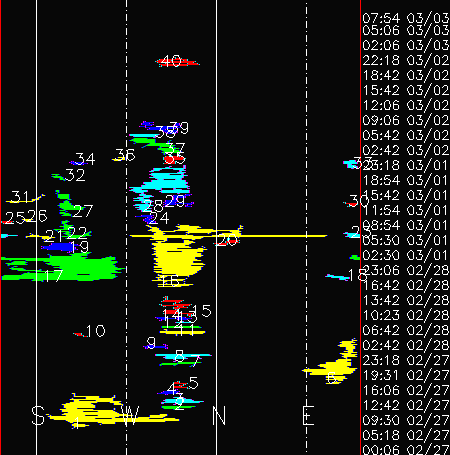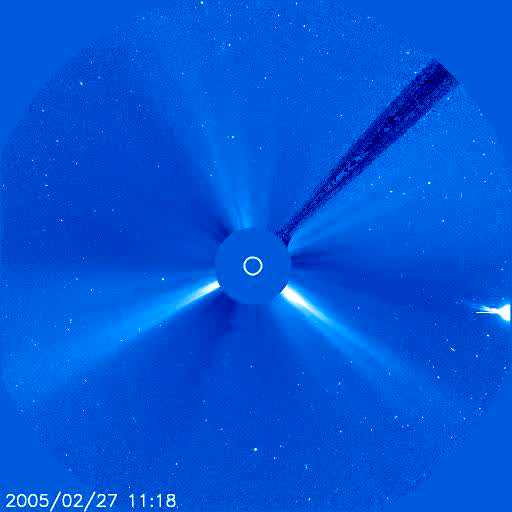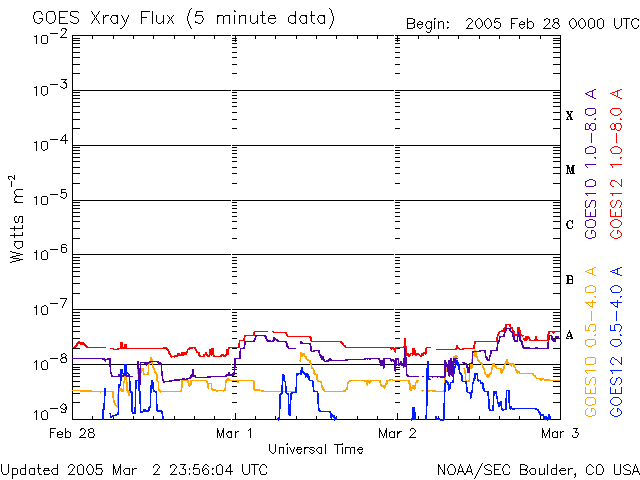A halo coronal mass ejection (CME) was detected by the CACTus-software. The halo CME was part of a whole series of ejections fired of from late February 28 up till March 2. Contrary, EIT195 shows a quiet Sun.
On March 1, 2005 a halo CME-alert was sent by CACTus, a software that detects automatically CMEs from LASCO pictures. The CME left the occulting disk of LASCO/C2 at 04:54UT and had a angular width of 196 degrees. The cloud was ejected mainly to the north.

It is the task of the forecaster to interpret this software output and extract the information relevant for space weather and its impact on Earth. The detection corresponded to part of a series of CMEs, starting actually already on February 28, 22:06UT. Have a look at the detection map above, created by CACTus. It pictures all CMEs visible in LASCO. The circumference of the solar disk is stretched to a straight line. A LASCO movie is available below, the lightbulb moving from right to left is Venus.

SOHO/EIT and the detected X-ray output given by GOES however, pictured the frontside of the Sun as quiet and silent. Only a small EIT-wave and dimming near the center of the solar disk were visible on March 2, around 17:00UT. Regarding the time the event happened, it is unlikely that this event is associated with a CME detected by CACTus.


If no event, visible on the front side of the solar disk can be related to the detected CMEs, the CMEs are backsided and come from a solar source on the backside of the Sun. These CMEs are moving in the direction away from Earth and cannot cause geomagnetic effects.
A quiet Sun and CMEs spotted by LASCO are not contradictory! Such CMEs can be the precursor of possible activity once the agitated source turns over the east limb.





